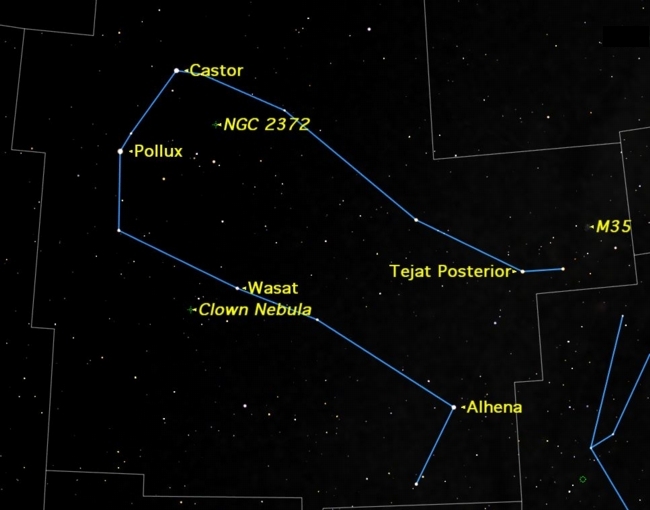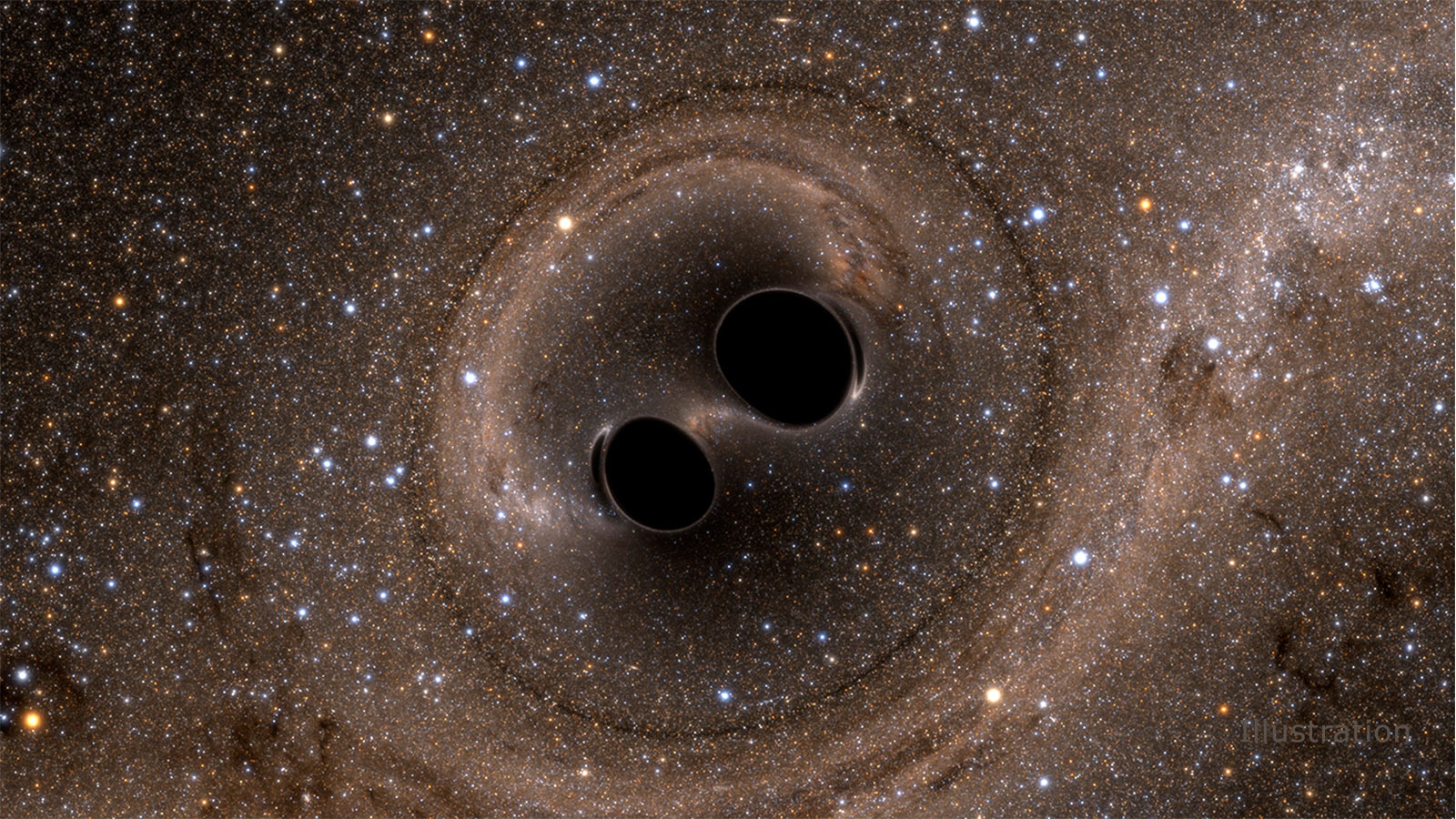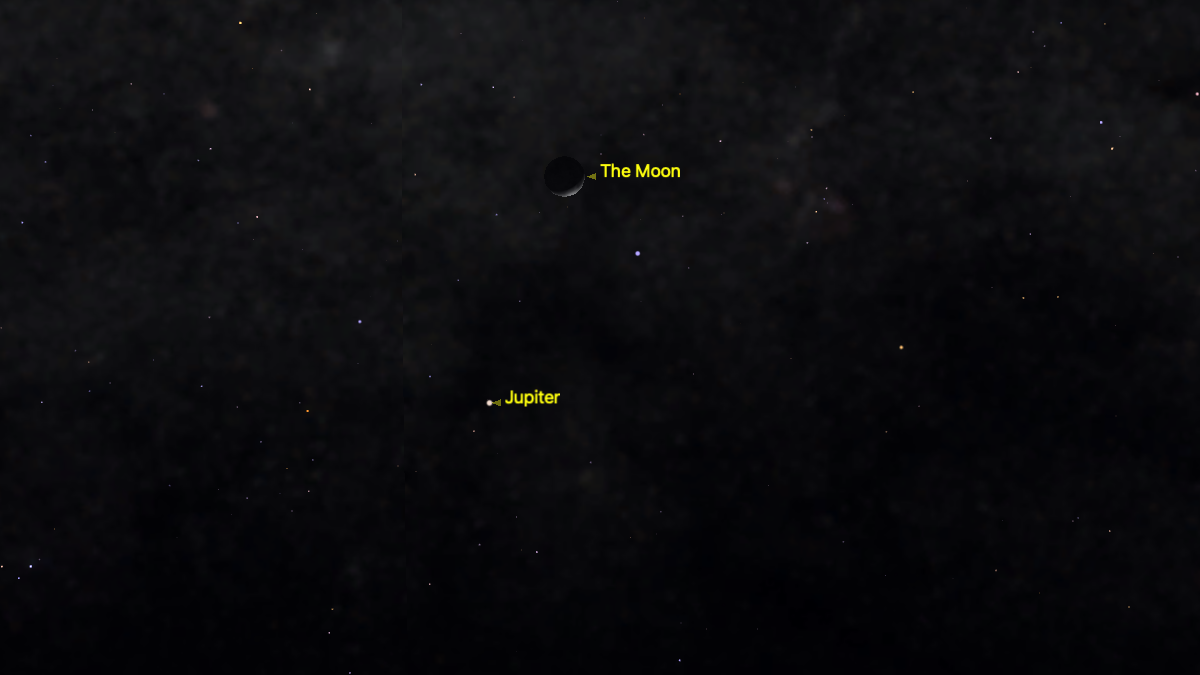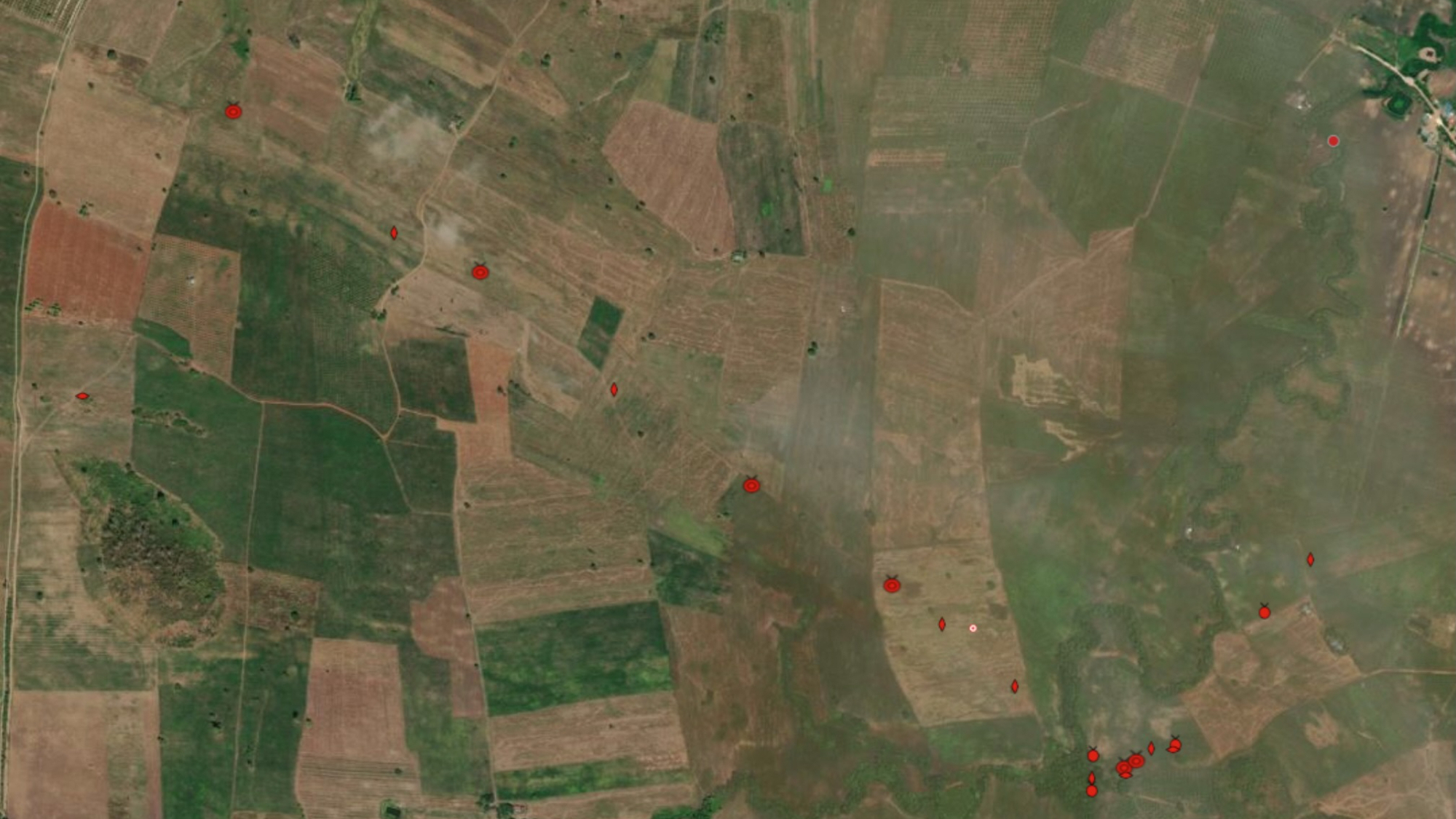Skywatching Guide: How to Observe the Bright Twin Stars Gemini

Gemini is the northernmost constellation in the zodiac, which places it high in the winter sky in the northern hemisphere.
Gemini represents a pair of sky map here shows how Gemini appears in the night sky now.
To remember which is which, look at the first letters in the stars' names. Castor is closest to the star Capella, and Pollux is closest to Procyon.
Castor is one of the prettiest double stars in the sky. Its two components are bright (magnitudes 1.9 and 2.9) and close together, only 2.2 arcseconds apart (an arcsecond is a unit of size for objects in the night sky. The full moon, for example, is about 1,800 arcseconds across).
Any telescope with an aperture of at least 60 mm (2.4 inches) should be able to see the binary as two individual stars. The bodies of the twins are marked by parallel lines of stars. [12 Must-See Skywatching Events in 2012]
About halfway down the southern twin's body is a third-magnitude star, Wasat, which is also a double star. Its components are very different in brightness, of magnitudes 3.5 and 8.2, but are much more widely separated than those of Castor, at 6.8 arcseconds apart.
At the foot of twin Castor, marked by the stars Tejat Posterior and Tejat Prior, look for the open star cluster Messier 35, one of the richest open clusters in the sky.
Get the Space.com Newsletter
Breaking space news, the latest updates on rocket launches, skywatching events and more!
Located 3,000 light-years away, it is almost exactly opposite the center of our Milky Way galaxy. Because this cluster lies less than a degree from the ecliptic (the path the sun appears to follow through the sky), the moon often passes close to the cluster, sometimes passing directly in front of it and occulting it completely.
Close to Wasat is one of the finest planetary nebulae, NGC 2392, known as the "Clown Face Nebula" or the "Eskimo Nebula" because of its resemblance to a human face.
This nebula is easy to miss, as the famous star-cataloger Charles Messier did, because it is very small in size and very bright, easily mistaken for a ninth-magnitude star at low telescope magnifications. To see it clearly, try using at least 100x magnification and a narrow-band or OIII filter.
Experienced observers will want to look for another planetary nebula, NGC 2372, which is much fainter than the "Clown Face," resembling a 12th-magnitude star.
Gemini is located in a rich area of the Milky Way, and scanning it with binoculars or a rich field telescope will reveal many other star clusters and asterisms.
This article was provided to SPACE.com by Starry Night Education, the leader in space science curriculum solutions. Follow Starry Night on Twitter @StarryNightEdu.
Join our Space Forums to keep talking space on the latest missions, night sky and more! And if you have a news tip, correction or comment, let us know at: community@space.com.

Geoff Gaherty was Space.com's Night Sky columnist and in partnership with Starry Night software and a dedicated amateur astronomer who sought to share the wonders of the night sky with the world. Based in Canada, Geoff studied mathematics and physics at McGill University and earned a Ph.D. in anthropology from the University of Toronto, all while pursuing a passion for the night sky and serving as an astronomy communicator. He credited a partial solar eclipse observed in 1946 (at age 5) and his 1957 sighting of the Comet Arend-Roland as a teenager for sparking his interest in amateur astronomy. In 2008, Geoff won the Chant Medal from the Royal Astronomical Society of Canada, an award given to a Canadian amateur astronomer in recognition of their lifetime achievements. Sadly, Geoff passed away July 7, 2016 due to complications from a kidney transplant, but his legacy continues at Starry Night.









